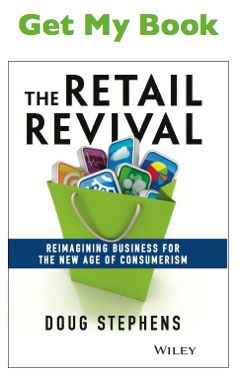By Doug Stephens
For years my parents lived without air conditioning in their home or cars. That seems almost unbelievable today, but they did so because they simply didn’t see the value in it. And they weren’t alone. In fact, this sort of latency of adoption applied to many things we take for granted today. Phone companies had to hard-sell Americans to convince them that the telephone could help improve their lives or their businesses. And contrary to popular belief, resistance to automobiles – especially in America’s cities was formidable. Consumers just couldn’t quite understand the value of these new technologies within the context of their daily lives.
Which leads me to a recent study published by the Boston Consulting Group. The study – a survey of 1,500 consumers concluded that despite a rush of online retailers competing to offer same-day shipping, only a small fraction of consumers (9 percent of those surveyed) have any interest in such a service. It went further, saying that only affluent, urban Millennials with annual incomes of upwards of $150K (a mere one percent of all consumers) appear at all interested in same day delivery. Therefore, the study’s authors assert, same-day shipping will remain (at best) a niche service, applying to a small range of products. End of story.
Ignore this study and others like it.
They’re dangerous, for a couple of reasons. First, they deliver sweeping judgment on developing trends, by looking only at a snapshot of consumer opinion at the most nascent stages of adoption. Second, they ask consumers to ascribe a value to something they’ve never fully or widely experienced, which is inherently problematic. Just as my parents came to regard air conditioning as indispensable, only once they’d had it long enough to become dependent on it, the same will likely be the case with same-day shipping. Its true value will only be recognized once it becomes more ubiquitous.
So is the case with many of today’s emerging trends. Whether we’re talking about 3-D printing, big data, or augmented reality, consumers are always challenged when asked to forecast their interest in things that haven’t fully taken shape. So, as business people, we can’t put too much stock in this sort of data. It’s barely even directional.
So how does one determine what consumers truly want if simply asking them is  fruitless? Steve Jobs once said, “People don’t know what they want until you show it to them.” I would even take the idea a step farther, to say that people only appreciate something’s true value once they begin taking it for granted.
fruitless? Steve Jobs once said, “People don’t know what they want until you show it to them.” I would even take the idea a step farther, to say that people only appreciate something’s true value once they begin taking it for granted.

